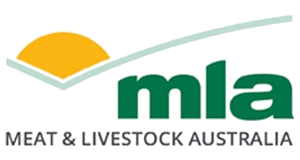Pedigree MatchMaker for Beef
| Project start date: | 01 May 2018 |
| Project end date: | 01 May 2022 |
| Project status: | Completed |
| Livestock species: | Grain-fed Cattle, Grass-fed Cattle |
| Relevant regions: | National |
|
Download Report
(6.3 MB)
|
|
Summary
The main methods of establishing maternal pedigree in cattle is to tag calves at birth or use DNA technologies to identify their mother. However, these methods can be labour intensive and costly, deterring producers from collecting maternal information about their herd.
This project tested using the Pedigree MatchMaker (PMM) system – developed for sheep – to collect maternal pedigree information in cattle, as a way to substantially improve pedigree information and increase rates of genetic gain.
The Enhanced Producer Demonstration Site (EPDS) in partnership with Agriculture Victoria showed it is possible to match large numbers of cows and calves using PMM. In addition to recording cow details, calves aged from one month to six months were successfully recorded using PMM.
Objectives
The overall objective of this project was to determine the effectiveness of PMM in a commercial beef herd. This included using attractants to move cattle through a purpose-built race to capture data.
Progress
Water was the most effective method tested to attract animals so they moved through the PMM system. Other attractants such as hay, silage or lick blocks may be used to supplement water as an attractant, but are not as effective on their own.
PMM is best suited to spring calving herds because recording would take place in late spring or early summer, when there are higher temperatures so water would be a more effective attractant.
When the effective attractants were used, 56% of animals were matched after 15 days and 94% of animals were matched after 30 days.
The EPDS showed that a herd of 246 cows with calves can progress through a PMM setup.
To achieve a return on investment of 3:1 on equipment and labour costs, producers would need to achieve less than 3% increase in calf growth rate from birth to weaning. This could be achieved through greater or more informed genetic or generational selection pressure.


